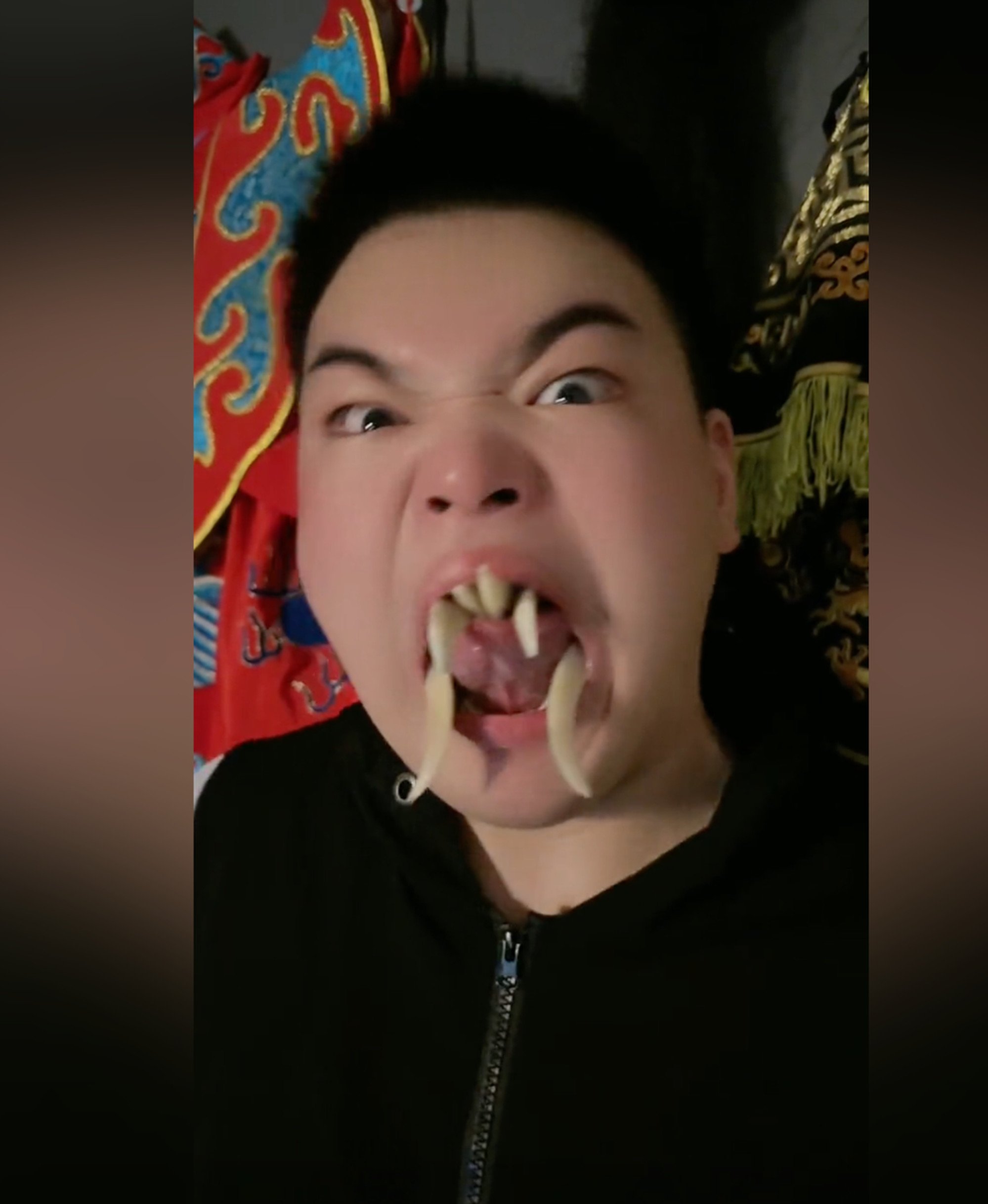A performer with a fierce makeup conceals the tusks of several wild boars in their mouth, flipping them up and down with their tongue and teeth.
Throughout this process, they need to sing, read and dance.
It could well be the most terrifying, and most difficult, folk art in China. It is called shua ya, which literally means “teeth playing”.
What is it?
Shua ya is a stunt used in traditional Chinese opera designed to portray the dark, dangerous and complex psychology of villainous characters.
The tusks of male wild boars that it uses are polished and disinfected and usually reach the length of an adult index finger.
Performers need to manipulate four to 10 tusks in their mouths, using their lips, teeth, and breath to make them move, conveying the emotions of characters.
Lowering the tusks indicates relaxation and satisfaction, while shaking them vigorously indicates anger.
Shua ya has become a traditional Chinese folk art due to its challenging techniques and chilling effects.
It is seen as being on a par with face-changing, a centuries-old Chinese art form integral to Sichuan opera, which involves rapid changes in performers’ facial expressions and makeup on stage.
Origins
Shua ya has a history spanning over 400 years and is a distinctive feature of opera performances in Ninghai, a county located in Zhejiang province in eastern China.
The most classic shua ya performance is Jinlian Slays Jiaolong.
Jiaolong, or the Chinese water dragon, diverges from the auspicious portrayal of Chinese dragons, causing chaos and bringing misfortune to people.
Artists portraying Jiaolong need to master shua ya to perform the part of a villain.
The stunt is recognised by the government as an intangible piece of cultural heritage.
A dying art
Due to the arduous training process, the art form is on the brink of extinction.
Its exponents must keep sharp tusks in their mouths at all times, except when eating or sleeping, until they can speak clearly.
It typically takes over a decade of practice to fully master.
Xue Qiaoping, 41, from Zhejiang province, is a sixth-generation inheritor of China’s shua ya art and one of its few female performers.
She told China Central Television: “When training with eight tusks in my mouth because they are very hard, my entire gums were worn out. I couldn’t eat or drink for a week, only relying on intravenous drips for nutrition.”

When she reached 10 tusks, Xue needed to use both hands to open her mouth wide enough to fit in all the teeth. Her mouth cracks after each performance.
Meanwhile, Li Yi, 19, from Henan province in central China, is a shua ya artist with 1.4 million followers on Douyin.
He has been practising this stunt for eight years.
“My mouth has torn and ulcerated more than 70 times, my jaw muscles enlarged, my teeth were ground down and my appearance changed dramatically,” Li said.
“But I am willing to devote my youth entirely to traditional culture,” he added.


